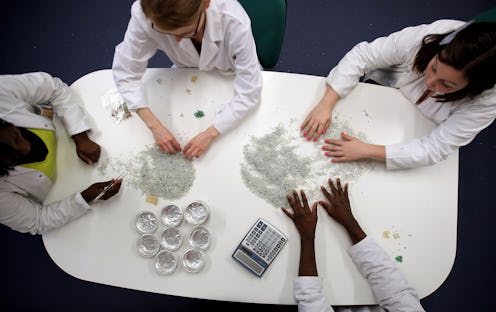News
$10 Million Granted To Fight Gender Bias In Labs
Emma Watson may have schooled the world on gender inequality on Saturday, but she left out one small yet vital point — sex and gender bias in laboratories. No, that doesn't mean the male-to-female ratio of scientists — though that certainly needs improvement — but the steep sex inequality of lab subjects. Fortunately, the National Institutes of Health is granting scientists $10 million as an incentive to go beyond the standard male-biased lab approach.
According to NIH, there's a persistent "overreliance" on male subjects (a.k.a. lab rats) in preclinical and clinical experiments. As a result, scientists aren't necessary getting the full scope of their research; with only the male sex tested and explored, scientists can't account for the biological variable of the female sex. This may cause problems further down the line, plus an overall lack of understanding of how certain diseases and/or drugs affect women.
So, what a better way to compel scientists to use an equal number of male and female lab subjects than provide $10.1 million in supplementary funding? Dr. Janine Austin Clayton, the NIH associate director for women’s health research, said in a statement on Tuesday:
This funding strategy demonstrates our commitment to moving the needle toward better health for all Americans, while helping grow our knowledge base for both sexes and building research infrastructure to aid future studies. The scientists receiving these awards have approached their research questions with fresh thinking, and are looking for innovation and discovery through a new lens.
The NIH will divide the funding among 82 researchers working in different fields, including cardiovascular physiology, behavioral health and neural circuitry. With the new supplement funding, these researchers will be able to add animals, tissue, or cell samples of the opposite sex to their projects, as well as analysis of existing data measuring the difference between the male and female sexes.
“By making strategic investments that incorporate sex into existing funded studies, we are paving the way for researchers to better understand when sex matters in their research," added Dr. James M. Anderson, director of NIH's Division of Program Coordination, Planning, and Strategic Initiatives.
The NIH established its Office of Research on Women's Health (ORWH) more than 20 years ago as a way to advance women's health and bolster female-sex studies, which have historically been left out of laboratories. In 1993, the agency helped pass the NIH Revitalization Act, requiring women to be a part of NIH-funded research.
Two decades later, half of all participants in NIH-funded clinical studies are women. However, a report released by the health agency in 2014 found that there's still a vast sex bias in preclinical research: the animals used are still overwhelmingly male, and science journals tend to ignore the sex discrepancies. As the report noted, these "key sex differences that could guide clinical studies" on humans in the future.
Providing additional funding for researchers to include more female lab subjects is an essential first step for the NIH to rectify gender bias among scientific research. Let's just hope it doesn't take another 20 years for sex and gender balance in the lab to become the norm.
Images: Getty Images (3)
